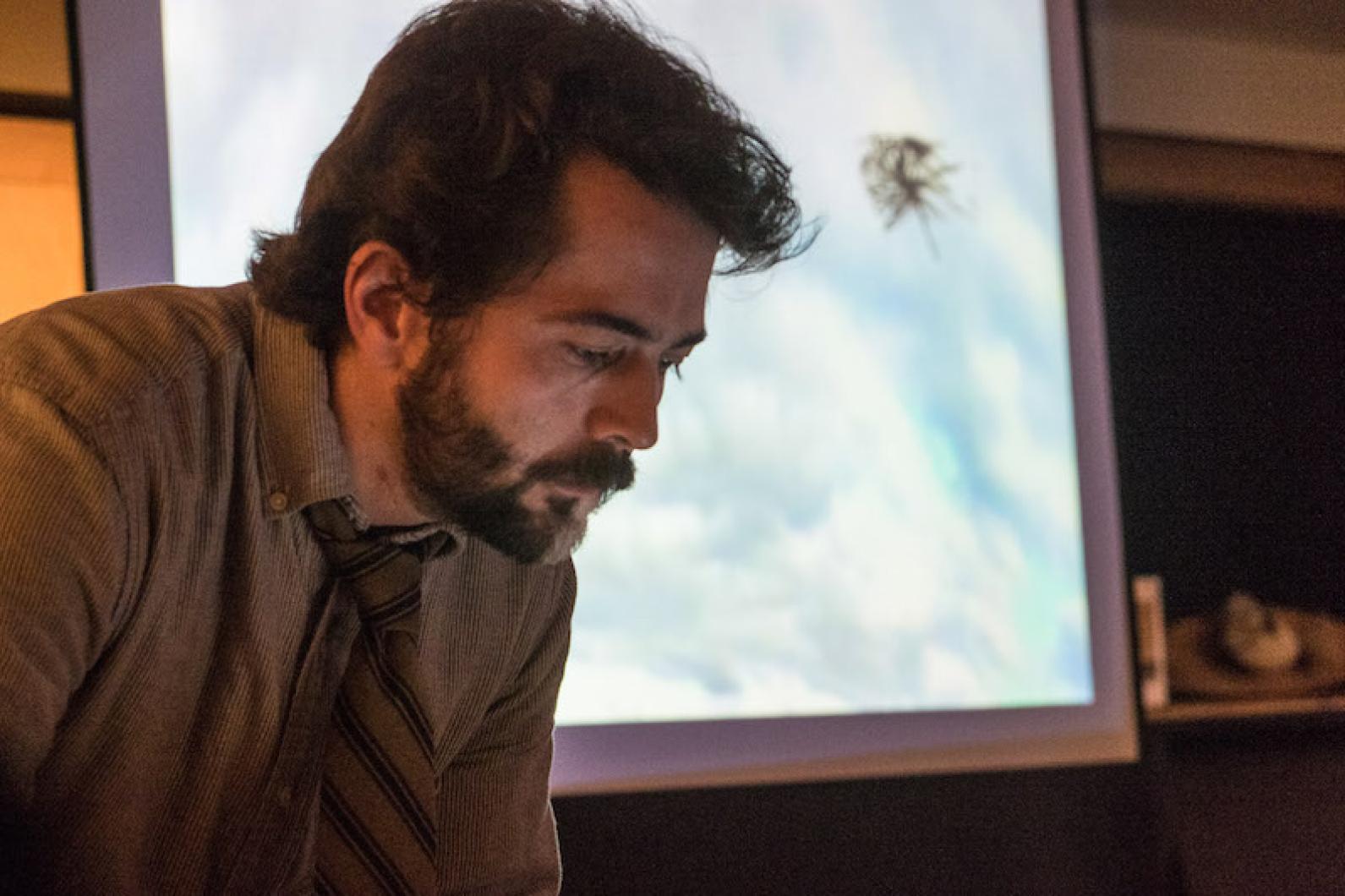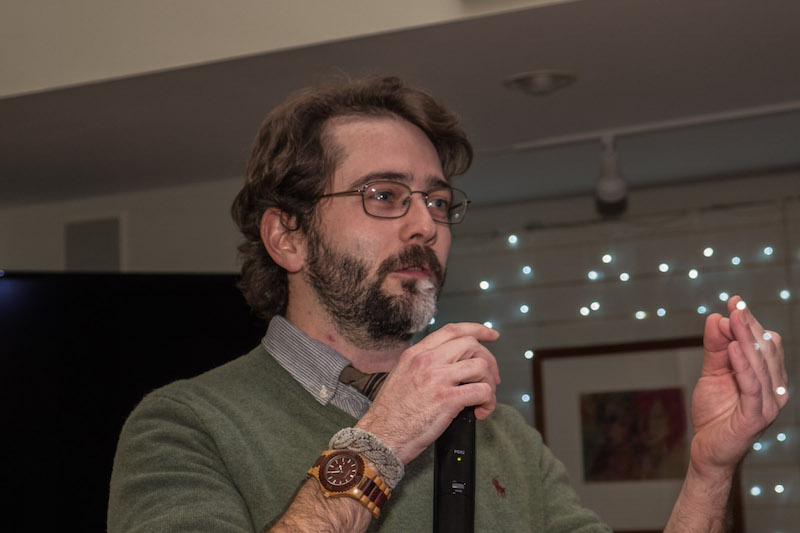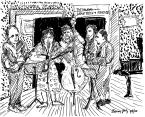On Friday night at Pathways Arts in Chilmark, the lights were low as musicians performed near a glowing screen on which clouds whirled dizzily above a Vineyard vista of trees and grasses that kept changing color. The view dissolved into a time-lapse series of webcam images from the old Marine Hospital at sunset. Far below, in the Vineyard Haven harbor, the Shendandoah darted forth, raising its sails before quickly dashing back out of the frame.
This is the visual world of projection artist Graham Smith, who uses computer programming and videography to accompany live music. On Thursday and Friday night last week he presented his art at Pathways and the Chilmark Community Center. A West Tisbury resident who grew up in Oyster Bay, N.Y., Mr. Smith began experimenting with computer art in his teens.
“I always saw it as an art form, but it wasn’t until college that I saw it as a way of personal expression,” said Mr. Smith, 33, who studied new media arts at the School of Visual Arts in New York city. On Martha’s Vineyard he has been inspired by the work of local painters and other artists.
“It’s all organic and natural,” he said. “I’m doing my best to blend into that.”
By day, Mr. Smith works as the Vineyard Gazette’s webmaster, designing and maintaining the newspaper’s online presence. At night, he’s free to explore the relationships between computers, the natural world and human emotions — often expressed by music.
Mr. Smith is also a regular collaborator at the off-season Pot Luck Jam series at the Chilmark Community Center. With Mr. Smith at his computer and projector, the music is accompanied by local images and video he coordinates for the performances.
“I really wanted to challenge myself to do something that flowed,” he said.
For last November’s Standing Rock benefit at the Chilmark Community Center, he layered Plains Indian tipis atop Vineyard landscapes, with videos of Dakota Access Pipeline protesters projected in vignettes on the tipi walls.
“Each layer is a completely different technology,” said Mr. Smith, who combines off-the-shelf computer programs to get the effects he wants. He also writes his own code when necessary.
At Pathways, Mr. Smith has joined a community of Island collaborators that includes musicians, dancers and even the audience. On a recent evening, audience members took turns writing and drawing in a notebook that was passed around the room in the “exquisite corpse” method pioneered a century ago in Europe by the Surrealists, whom Mr. Smith sees as the predecessors of today’s mixed-media and new media artists.
Transforming the notebook into a collective artwork fell to Mr. Smith, guitarist Andy Herr and actor-singer Adam Petkus, who presented their results last Thursday night. With slides, animation, music and voice, it made for a strangely captivating, if disconnected, narrative.
“Exceptionally experimental,” as Mr. Smith put it.
Mr. Smith also showed Thursday’s audience a pre-rendered version of his three-layered video for the Standing Rock benefit, with Carole Vandal improvising on a Native American flute.
On both Thursday and Friday, with Phil DaRosa on guitar, voice and audio loops, Mr. Smith live-projected a stream of images and video, often with geometric shapes rotating between land and sky. These shapes are references to the concept of sacred geometry found in religious art and architecture, he said.
The images and clips transitioned gradually as Mr. DaRosa performed. Unlike projectionists who match live music beat-for-beat, Mr. Smith thinks of his visual art as “taking the time to create a painting,” he said.
“I see the relationship between a musician and the audience as a conversation,” he said. “I want to join that conversation, not interrupt it.”








Comments (2)
Comments
Comment policy »